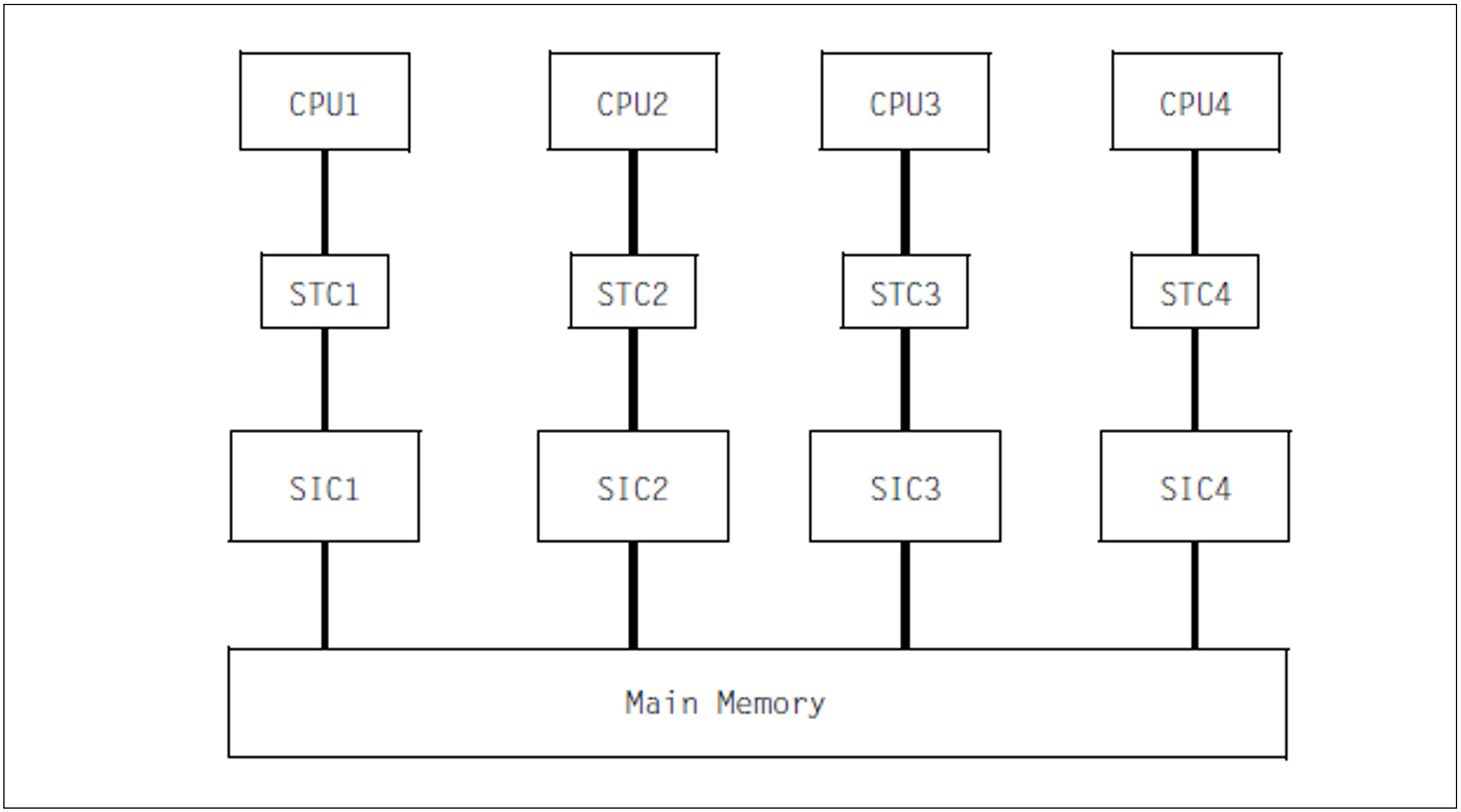The objective of the TANGRAM (task and group affinity management) concept is to make better use of the performance available from multiprocessor hardware.
All the servers use fast caches to minimize the differential between CPU speeds and access times to main memory. Depending on the instruction profile (in particular the number of accesses to main memory required), the possible performance is to a large degree determined by the hit rate in the cache.
There are two types of cache, which are generally combined:
Store-Through Caches (STCs)
The data is “passed through” as soon as possible, i.e. the data in main memory is updated as soon as possible after a write request.Store-In-Caches (SICs)
The data is retained in the cache and is written back to main memory on the basis of the LRU (least recently used) principle. This means that the data in main memory is not up to date.
Whereas in the case of monoprocessors, full performance can be achieved using a sufficiently dimensioned cache, the situation with multiprocessors is far more complex.
Figure 9: Cache hierarchy in a quadroprocessor with First-Level Store-Through-Caches and Second-Level Store-In-Caches
The greater the number of tasks running on different CPUs which access the same memory areas (e.g. memory pools), the greater the probability that the current information is not located in the CPU's own cache (SIC), but in a neighboring cache.
The current data must first be moved to the CPU's own cache before it can continue processing, with the result that the CPU resources available to the user are reduced. This situation is exacerbated as the proportion of write accesses to the same main memory pages rises.
The TANGRAM concept attempts to counteract this loss of performance by forming task groups and assigning them to certain CPUs (preferably a subset of the CPUs available).
Formation of task groups
A task group is made up of so-called “affined tasks” which have write access to a large set of common data.
The TINF macro is used to sign onto a task group. The TANGBAS subsystem, which is started automatically when the system is ready, is responsible for managing the task groups.
Assignment to CPUs
Task groups are assigned to CPU groups dynamically, depending on the load, if viewed over longer periods.
For shorter periods (PERIOD parameter with a default value of 10 seconds), on the other hand, fixed assignments apply, in order to alleviate the problems with the caches described above.
The assignment algorithm in the TANGRAM subsystem, which must be started explicitly, measures the following values at periodic intervals:
CPU usage of each task group
workload of each CPU
CPU total workload
If necessary, the task groups are reassigned to the CPU groups according to the following criteria:
The task group must have a minimum CPU requirement (THRESHOLD parameter, with a default of 10%), before it is taken into account for individual assignment to a CPU.
If a task group loads one or more CPUs to a great extent (CLEARANCE parameter, with a default of 20%, corresponding to a CPU workload of 80%), it is assigned one more CPU in order to ensure that any increase in load for this task group in the next time interval can be adequately handled.
Task groups are assigned to CPUs in such a way that all the CPUs have a similar workload, as far as this is possible.
At each change of task, the scheduling algorithm in PRIOR checks whether a task is allowed to run on the CPU according to the assignment made by the assignment algorithm. An “idle in preference to foreign” strategy is applied, i.e. idle time in a CPU is preferred rather than initiating a foreign task (which would have to rebuild the contents of the cache entirely).
Use of TANGRAM
Improved use of the performance available from multiprocessor hardware depends on the following conditions:
number of CPUs (greater advantages with more CPUs)
Hardware architecture (large Store-In Caches)
application (proportion of write operations, options for distribution over a subset of the available CPUs)
workload (significant advantages are only achieved with high workloads)
It is difficult to make generalized statements with regard to the advantages of using TANGRAM. Measurements with different workloads showed an increase in hardware performance of approx. 5% with biprocessor systems and approx. 10% with quadroprocessor systems.

